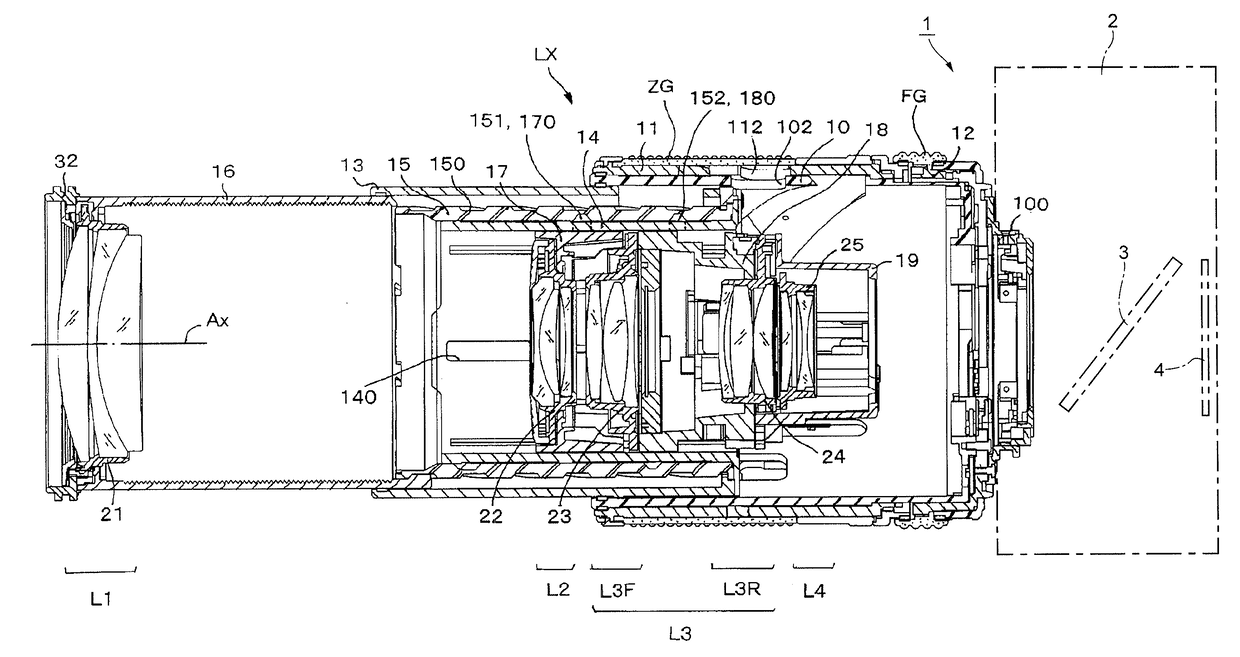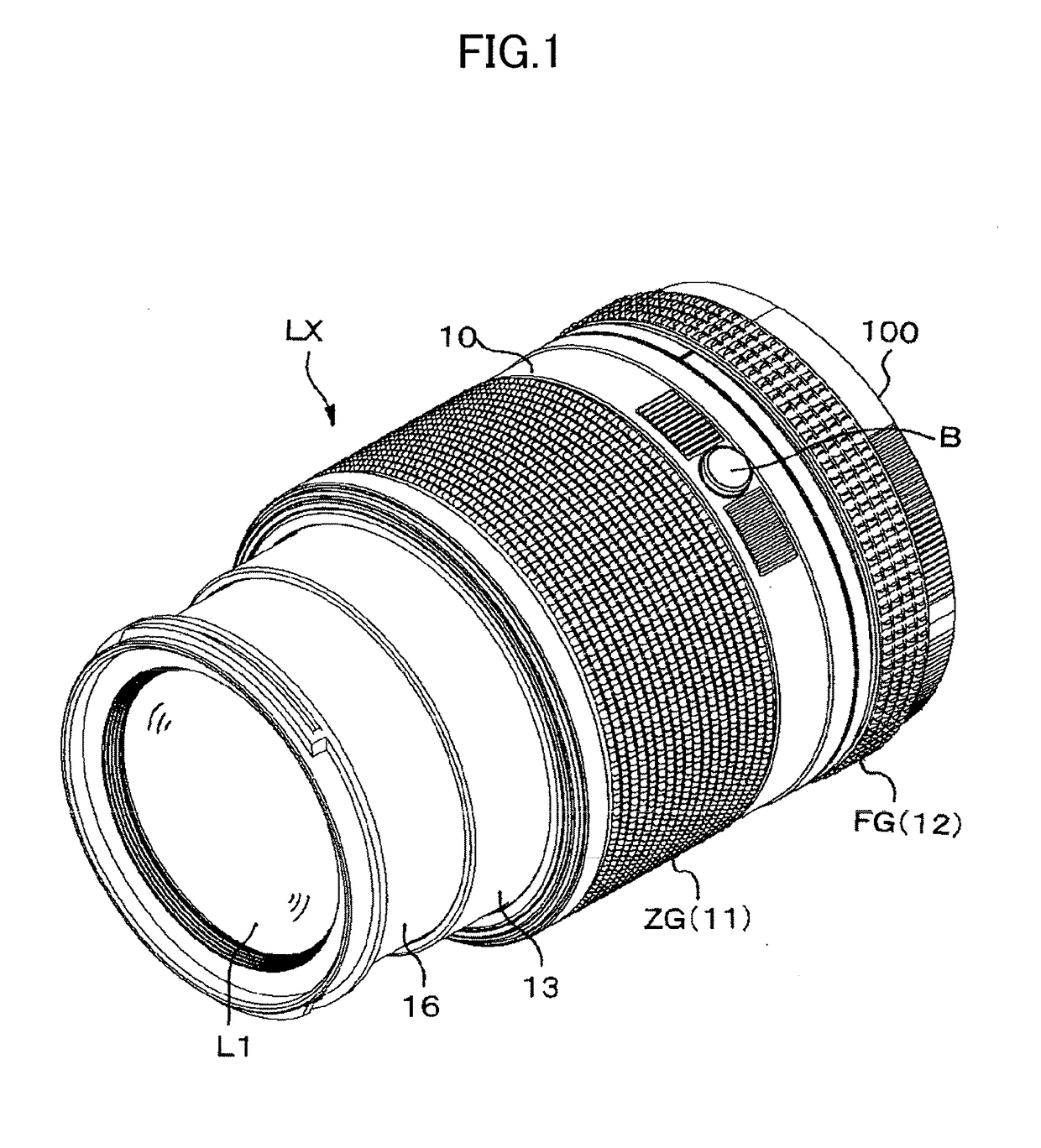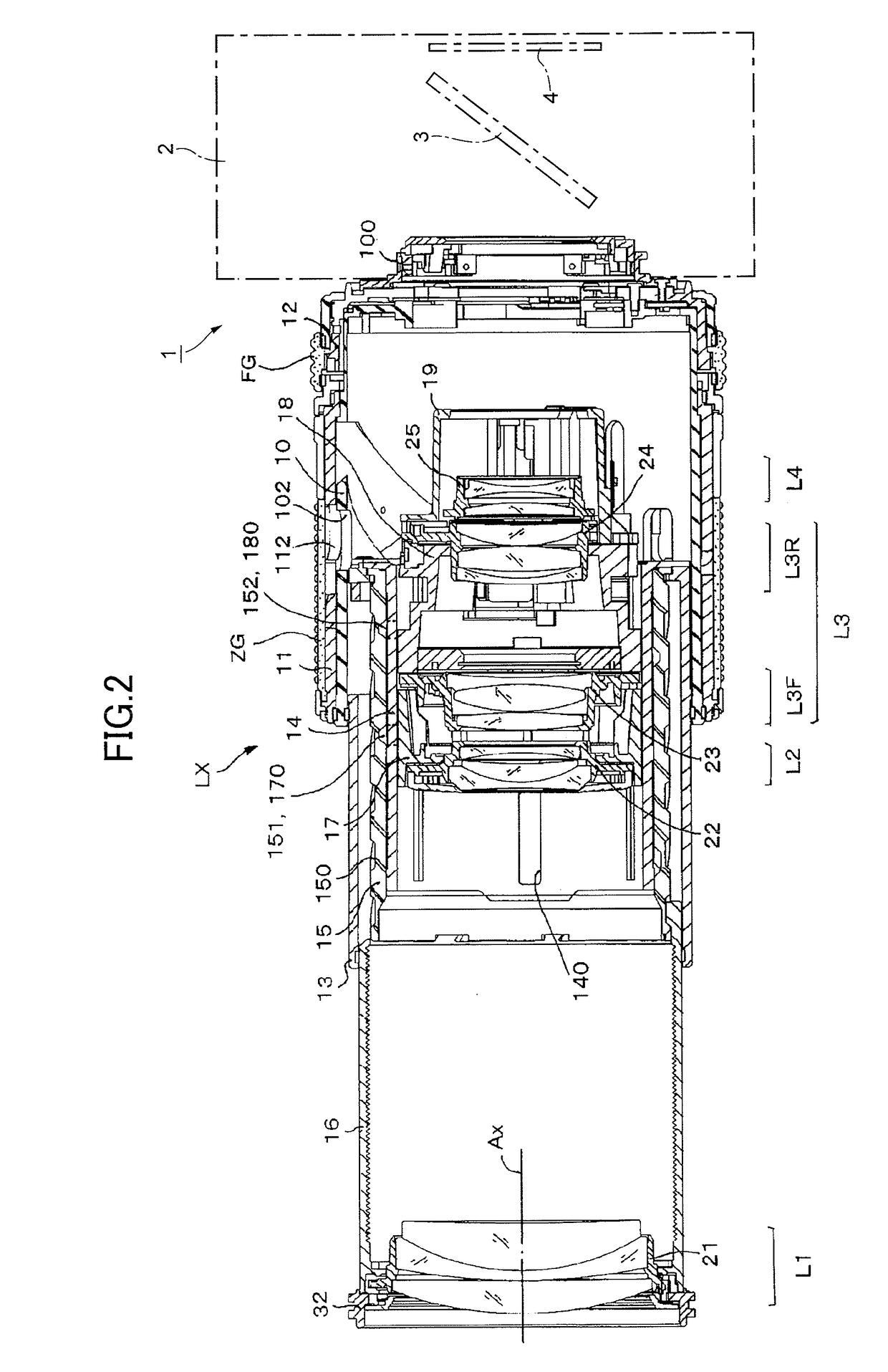Lens barrel and imaging device
a technology of imaging device and lens barrel, which is applied in the direction of mountings, instruments, printing, etc., can solve the problems of inability to apply tilt mechanism, on an as-is basis, to lenses, and the amount of displacement of each lens' optical axis piles up, and it is difficult to make sufficient adjustments
- Summary
- Abstract
- Description
- Claims
- Application Information
AI Technical Summary
Benefits of technology
Problems solved by technology
Method used
Image
Examples
Embodiment Construction
[0031]An embodiment of the present invention will be described with reference to the accompanying drawings. FIG. 1 is an outer perspective view of a lens barrel LX according to the present invention, formed as a zoom interchangeable lens for a single-lens reflex camera (imaging device) 1 (see FIG. 2 and FIG. 3).
[0032]A camera body 2 of the single-lens reflex camera 1 is provided on the front thereof with a lens mount to which the lens barrel LX is detachably attached. The camera body 2 is provided thereinside at a position behind the lens mount with a quick-return mirror 3 and an image sensor 4.
[0033]The lens barrel LX can be attached to / removed from the camera body 2 by means of a lens mount 100 that is provided in a fixing barrel 10, and can move to the long-focus (telephoto) side and the short-focus (wide-angle) side by rotating / operating a zoom ring 11. Also, by operating the zoom ring 11 further to the short-focus side while pressing a retraction button B disposed in an outer p...
PUM
 Login to View More
Login to View More Abstract
Description
Claims
Application Information
 Login to View More
Login to View More - R&D
- Intellectual Property
- Life Sciences
- Materials
- Tech Scout
- Unparalleled Data Quality
- Higher Quality Content
- 60% Fewer Hallucinations
Browse by: Latest US Patents, China's latest patents, Technical Efficacy Thesaurus, Application Domain, Technology Topic, Popular Technical Reports.
© 2025 PatSnap. All rights reserved.Legal|Privacy policy|Modern Slavery Act Transparency Statement|Sitemap|About US| Contact US: help@patsnap.com



